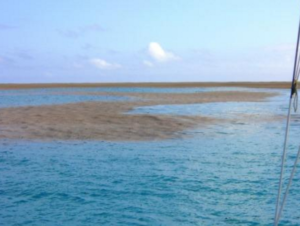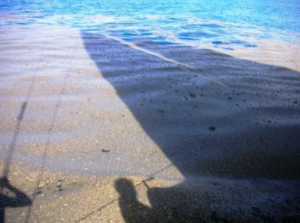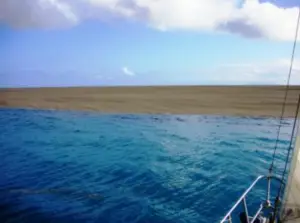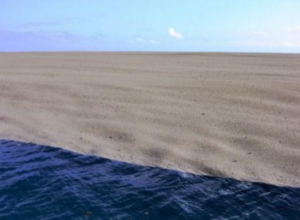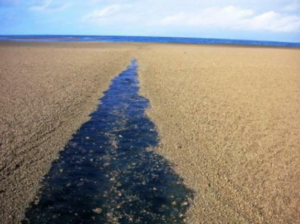Boat Crew Sees Birth of a New Island in South Pacific-Truth! & Outdated!
Summary of eRumor:
Crew aboard the yacht Maiken witnessed the formation of a new island right in the South Pacific.
The Truth:
Reports of a boat crew witnessing the formation of a new island in the South Pacific are true — but the “new” island has since washed away.
The encounter happened in August 2006 while the Maiken was sailing toward Fiji in the South Pacific. The captain of the yacht, Fredrik Fransson, blogged that the crew noticed “somewhat grainy streaks in the water” and thought it might be coming from an old oil dumping. As they sailed on, however, the streaks grew more frequent and fist-sized things were floating in the water:
Eventually it became more and more clear to us that it had to be pumice from a volcanic eruption. And then we sailed into a vast, many miles wide, belt of densely packed pumice. We were going by motor due to lack of wind and within seconds Maiken slowed down from seven to one knot. We were so fascinated and busy taking pictures that we plowed a couple of hundred meter into this surreal floating stone field before we realized that we had to turn back. Just as we came out of the stone field and entered reasonably normal water we noticed that there came no cooling water from the engine. Not surprising, really. After cleaning the water filter the Yanmar diesel started again. Thank God!
Pictures taken by crew members have since gone viral:
However, don’t go looking for this new island in the South Pacific. It disappeared almost as quickly as it formed. Discovery magazine reports that landmasses formed by underwater volcanoes are often temporary, and that’s what happened to this “new” island:
Meanwhile, volcanologist Scott Bryan of Kingston University in London was gunning for a research expedition to the island before it disappeared. Many new volcanic islands are ephemeral, lasting only months before disappearing again under the sea. “Ultimately, it’s a battle between the frequency and volume of eruptions and the wave action taking it back down to sea level,” says Bryan. The type of material that erupts also affects an island’s life span. True lava forms more enduring structures—like Surtsey in Iceland, which broke through surface waters in 1963 and remains exposed today—while islands of mostly pumice and ash are quickly torn down by the waves.
That didn’t bode well for Fransson’s find. When Bryan finally reached the site this February, he found that the new island—originally over a tenth of a mile square—had already nearly washed away. The rotten-egg smell of sulfur dioxide gas hinted that magma was still cooling inside. Although sea conditions were too rough to make landfall, Bryan was able to collect water samples near the volcano for chemical analysis, which is currently under way. By now, he says, a shallow seamount is probably all that remains of the surprise island at Home Reef.
So, the legend of the new island in the South Pacific has outlasted the island itself. Still, the story tends to resurface every few years. The story went viral in March 2016, for example, after the U.K.’s Daily Mail published photos taken by the Maiken’s crew without clarifying that they were 10 years old.
And an underwater volcano formed another island in the South Pacific near Tonga in 2015. That story, as reported here by ABC News, renewed interest in the story of the Maiken’s crew witnessing the birth of an island in 2006.

